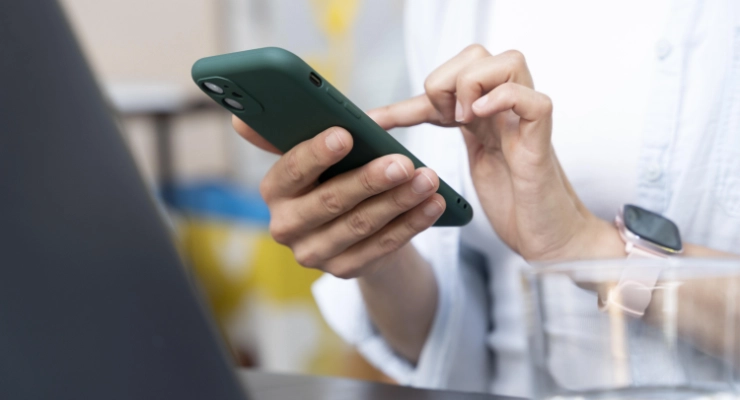New York City’s healthcare system is as complex and diverse as the city itself. With a dense population, fast-paced environment, and one of the most culturally rich communities in the world, communication between healthcare providers and patients isn’t just helpful—it’s essential.
From overbooked clinics in Brooklyn to multilingual communities in Queens, poor communication can lead to delays, frustration, and even missed diagnoses. As the city’s healthcare needs continue to evolve, practices must prioritize strong, responsive, and inclusive communication strategies to keep up.
This is where professional
medical answering services in New York play a vital role in helping healthcare providers maintain a high standard of care.
The Demands on New York’s Healthcare Providers
In a city of over 8 million residents, healthcare systems face immense pressure. Large hospitals, neighborhood clinics, urgent care centers, and private practices all share one common challenge: managing high patient volumes with limited time and resources.
Phones ring constantly. Staff juggle walk-ins, emergencies, follow-up requests, and administrative work—often all at once. Without a structured communication plan in place, it’s easy for patient calls to go unanswered or mishandled.
In New York, where expectations are high and patience is often short, this can be the difference between a retained patient and a lost one.
First Impressions Start on the Phone
Most patients will first interact with a practice over the phone. Whether they’re calling about a first appointment, a prescription refill, or test results, how that call is answered sets the tone for the entire relationship.
A prompt, courteous, and informative response builds confidence. A rushed, confusing, or missed call does the opposite. In a city known for speed, patients expect efficiency—but not at the expense of empathy.
Reliable phone communication shows patients they’re valued, that their concerns matter, and that help is always within reach.
New York’s Unique Communication Challenges
New York’s cultural and linguistic diversity adds an extra layer of complexity to patient communication. While this diversity is one of the city’s greatest strengths, it also requires healthcare providers to adapt their messaging to meet the needs of a multilingual, multicultural population.
Many residents prefer to speak in Spanish, and others may feel more comfortable communicating in different languages. A lack of language access can result in confusion, misinterpretation of medical instructions, or patients choosing not to follow up at all.
Add to that the logistical challenges of traffic, noise, and time constraints, and it’s clear that communication breakdowns can quickly escalate into care gaps.
How Answering Services Bridge the Gap
Medical answering services provide an essential safety net for busy practices. When staff are tied up or off-duty, these services ensure that patient calls are still answered, messages are properly relayed, and urgent issues are flagged appropriately.
For practices in New York, where even a single missed call can lead to a backlog, this consistency is invaluable.
Here’s how answering services help improve communication:
- Bilingual Support (English and Spanish): Helps providers connect with more patients confidently and respectfully.
- After-Hours Coverage: Ensures patients can reach a live, professional representative outside of regular office hours.
- Customized Call Handling: Routes calls based on urgency, specialty, or provider instructions, reducing delays and confusion.
- Improved Workflows: Reduces pressure on front desk staff, allowing in-house teams to stay focused and organized.
Better Communication Means Better Outcomes
Effective communication isn’t just good practice—it’s a key component of patient health outcomes. When patients understand their care plans, know when and how to reach their provider, and feel comfortable asking questions, they are more likely to follow through on treatments.
Conversely, patients who struggle to get answers may miss appointments, ignore follow-up instructions, or seek care elsewhere.
Clear, consistent communication contributes to:
- Fewer missed appointments
- Faster response to urgent concerns
- Higher patient satisfaction and retention
- Improved trust between providers and patients
What New York Practices Should Look For
Not all answering services are created equal. For healthcare providers in New York, it’s important to choose a partner that understands the local landscape and can meet the city’s unique demands.
Here’s what to prioritize:
- HIPAA-Compliant Operations: Patient privacy must always be protected.
- Bilingual Agents (English and Spanish): Ensure accessibility across the city’s diverse communities.
- Customizable Scripts and Call Routing: Align call handling with your practice’s workflow.
- Experience with High-Volume Practices: Look for services that can scale to match demand without sacrificing quality.
Communication Is Care
In a city as fast-moving and complex as New York, efficient patient communication is no longer a luxury—it’s a necessity. Whether it’s reducing hold times, improving clarity, or simply being there when a patient needs to talk, strong communication builds better care from the first call forward.
If your team is too busy to manage every call, or your patients need more reliable access to your practice, it may be time to consider a professional solution.
Explore how our medical answering services in New York can help your practice stay connected, responsive, and ready for whatever comes next.
FAQ
1. Why is patient communication important in healthcare?
Effective communication improves patient understanding, builds trust, and increases adherence to care plans. It also reduces missed appointments and improves overall satisfaction.
2. What are the risks of poor communication in medical practices?
Poor communication can lead to misunderstandings, delayed care, decreased patient satisfaction, and increased risk of medical errors.
3. How do answering services improve patient communication?
Medical answering services ensure calls are answered promptly and professionally. They reduce wait times, assist with scheduling, and provide consistent, after-hours communication support.
4. What features should a New York medical answering service have?
Look for HIPAA-compliant call handling, bilingual support (English and Spanish), customizable call routing, and experience working with high-volume practices.
5. Do answering services help reduce staff burnout?
Yes. By handling high call volumes and routine inquiries, answering services lighten the load on in-house staff, helping reduce stress and allowing them to focus on in-office patient care.





